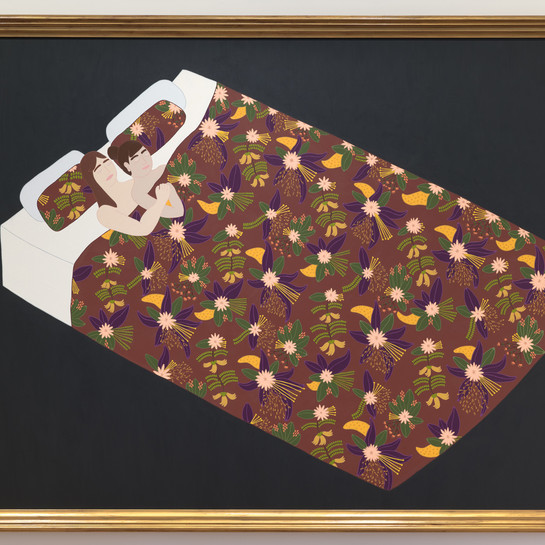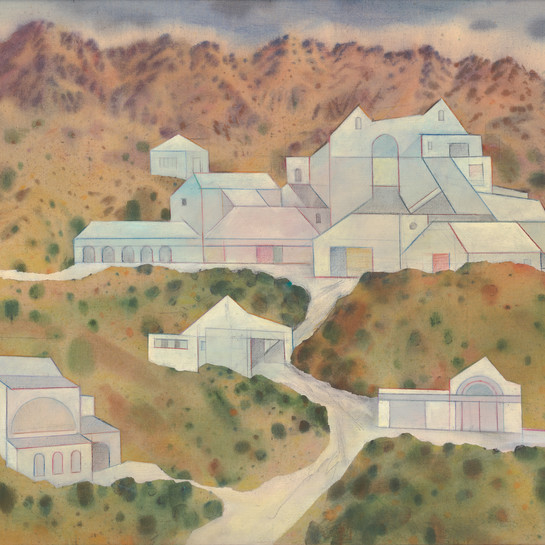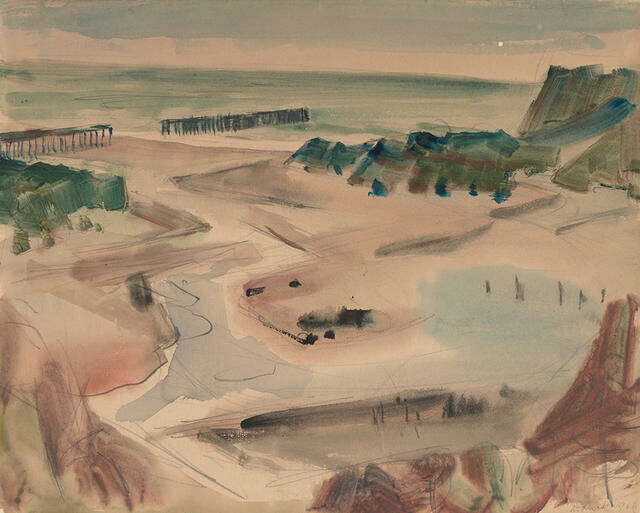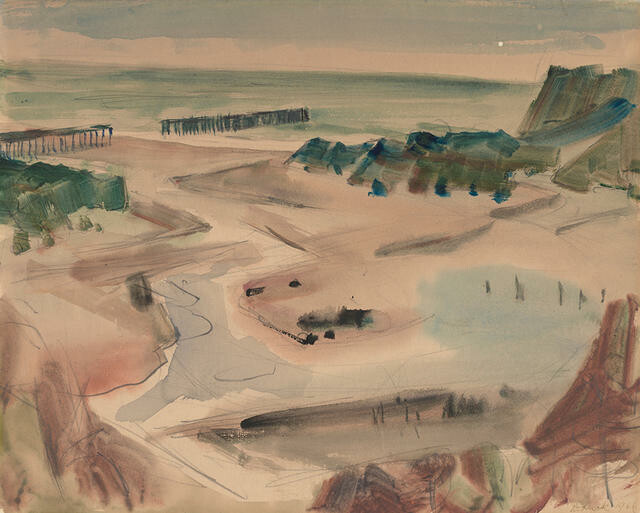Doris Lusk
Aotearoa New Zealand, b.1916, d.1990
Onekaka Estuary
- 1966
- Pencil and watercolour on paper
- Lawrence Baigent / Robert Erwin bequest, 2003
- 455 x 525 x 24mm
- 2003/67
- View on google maps
Location: Sir Robertson and Lady Stewart Gallery
Tags: beaches, estuaries, jetties, landscapes (representations), natural landscapes, rivers, sand, seas
The small settlement of Onekaka in Mohua Golden Bay takes its name from the kupu for red and beach – perhaps a reference to the burning heat of the sand in summertime. After her first visit there in 1965, it became a place of creative fascination and emotional connection for Doris Lusk. She made numerous drawings and paintings of the luminous estuary dramatically bisected by a decaying pier, built in 1920 to load pig iron from the nearby ironworks onto ships bound for Australia. Lusk, who had recently started painting with watercolours, embraced the challenge of showing the shifting play between land and waterin different lights and tides.
kupu ~ words
He Kapuka Oneone – A Handful of Soil (from August 2024)
Exhibition History
Te Wheke: Pathways Across Oceania, 30 May 2020 – 3 July 2022
Doris Lusk fitted art-making in around the demands of raising a young family, which included painting when they holidayed. She returned to Onekaka Beach in Golden Bay many times, referring to it as her spiritual home. The derelict wharf at Onekaka became a favourite subject.
Doris Lusk: Practical Visionary, 4 June – 30 October 2016
Built in the 1920s to load pig iron bound for Australia the nearby ironworks, the Onekaka wharf in Golden had begun decaying long before Lusk first saw it in By then, it was no longer connected to the sea and found its dramatic break at the low tide mark irresistible: “It was almost a geometric situation, the way it protruded through the quiet surf.” Years later, Lusk recalled how she had set out determined not to paint the wharf, only to return with a sketchbook full of little else. The interplay between light and shadow, structure and fluidity, strength and decay intrigued and she would paint it almost exclusively over thefive years, in watercolours executed on the spot and a series of brooding oil paintings. This rapidly worked study, observed at a greater distance from the wharf most of Lusk’s Onekaka works, emphasises the estuary’s luminous quality and constantly changing tides.




